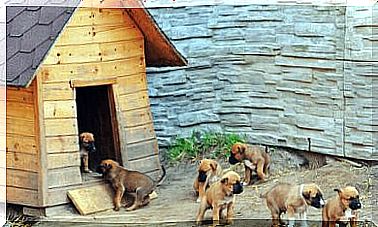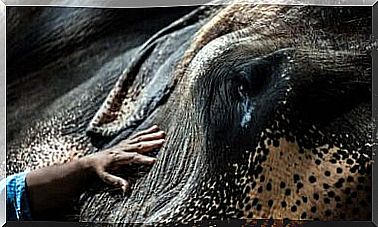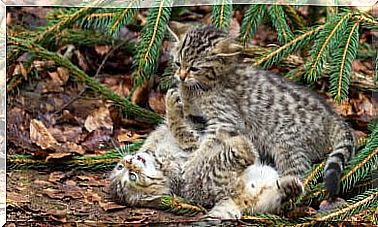Fun Facts About Wombats

Wombats are very interesting and cute animals. At first glance, they look like a combination of pig, bear and rodent.
In fact, wombats are marsupials, as are koalas and wallabies. In Australia, there are more than 200 species classified as marsupials.
Marsupials are mammals that are characterized by their reproductive behavior. A peculiarity is the fact that puppies are not born fully developed.
Thus, after an extremely short gestation period, they end up growing inside the pouch in the mother’s womb. This pouch is called the marsupium, where the mammary glands are located.
For the mother’s comfort, the pouch is supported by marsupial bones. This morphologically differentiates marsupial animals from any other placental mammal.
Wombats are small marsupials, the size of a medium-sized dog. Thus, a wombat is approximately 70 centimeters long. In adulthood, they weigh between 25 and 40 kg, although hairy-nosed wombats may weigh less.
They are ‘designed’ animals for digging, with a compact appearance, short strong legs and powerful claws.
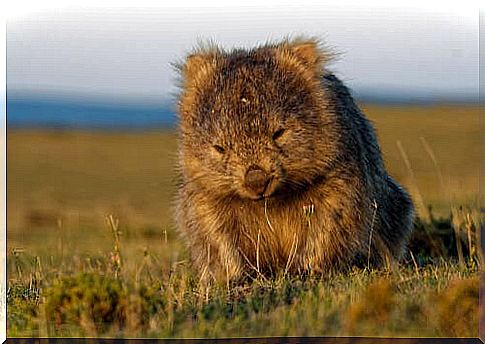
1. Wombats: social and hermits
Some wombats are quite sociable and enjoy spending time in community. However, there are other animals that prefer to spend time alone.
Common wombats are solitary, but the furry-nosed one prefers to live in communities with up to 12 other wombats. In general, the wombat has nocturnal habits. It is during the night that he prefers to go out looking for food and to dig his tunnels.
However, during the coldest days, the wombat will probably prefer to leave its den to sunbathe and warm up a bit. Although they don’t climb trees, they can swim and run at average speed.
2. No need to drink water for several years
Wombats are herbivores, so they feed only on vegetation, with a diet based on roots, grass and bark. Unlike other animals, wombats can get almost all the water they need from the food they eat. In this way, a wombat can live for several years without drinking water directly and still remain adequately hydrated.
According to some studies, the wombat takes about two weeks to digest food. This is because your stomach enzymes work very slowly.
3. Dig amazing tunnel networks
All species of wombats live in Australia, specifically in the mountains of Tasmania. This animal inhabits burrows dug by itself.
Wombat lairs are made up of a series of tunnels that connect caves. Some burrows become so wide that they reach 200 meters in length.
4. Cubed feces of wombats
As incredible as it may sound, this is true: the wombat’s stool is cube-shaped. Wombats are the only animals in the world capable of producing feces in this way.
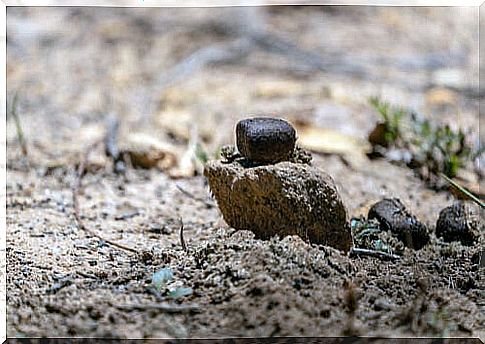
Over the years, many zoologists and researchers have suggested that this would be a way to mark territory. If the stool cannot roll, it stays exactly where it is. However, other theories have emerged recently.
According to Patricia Yang, a researcher at the Georgia Institute of Technology, the shape of the stool has to do with the elasticity of the intestine. The wombat’s intestines need to extract as much water as possible from the food, so it squeezes the stool into these little cubic structures.
5. The inverted marsupium of the wombats
Generally, wombats mate at times when food is plentiful. If food is not plentiful during a given year, the wombat will not mate.
The wombat’s gestation period is 20 to 30 days, giving birth to a single offspring that, at birth, weighs just two grams. It finishes developing in the mother’s purse.
Unlike other marsupials, the wombat marsupium is backwards. This means that it has an opening at the bottom, unlike what happens with kangaroos. This shift in openness is an evolutionary result. This prevents debris and dirt from entering the bag while the mother digs.
Now you know some of the most common features of wombats. However, there are still many more to be discovered!
